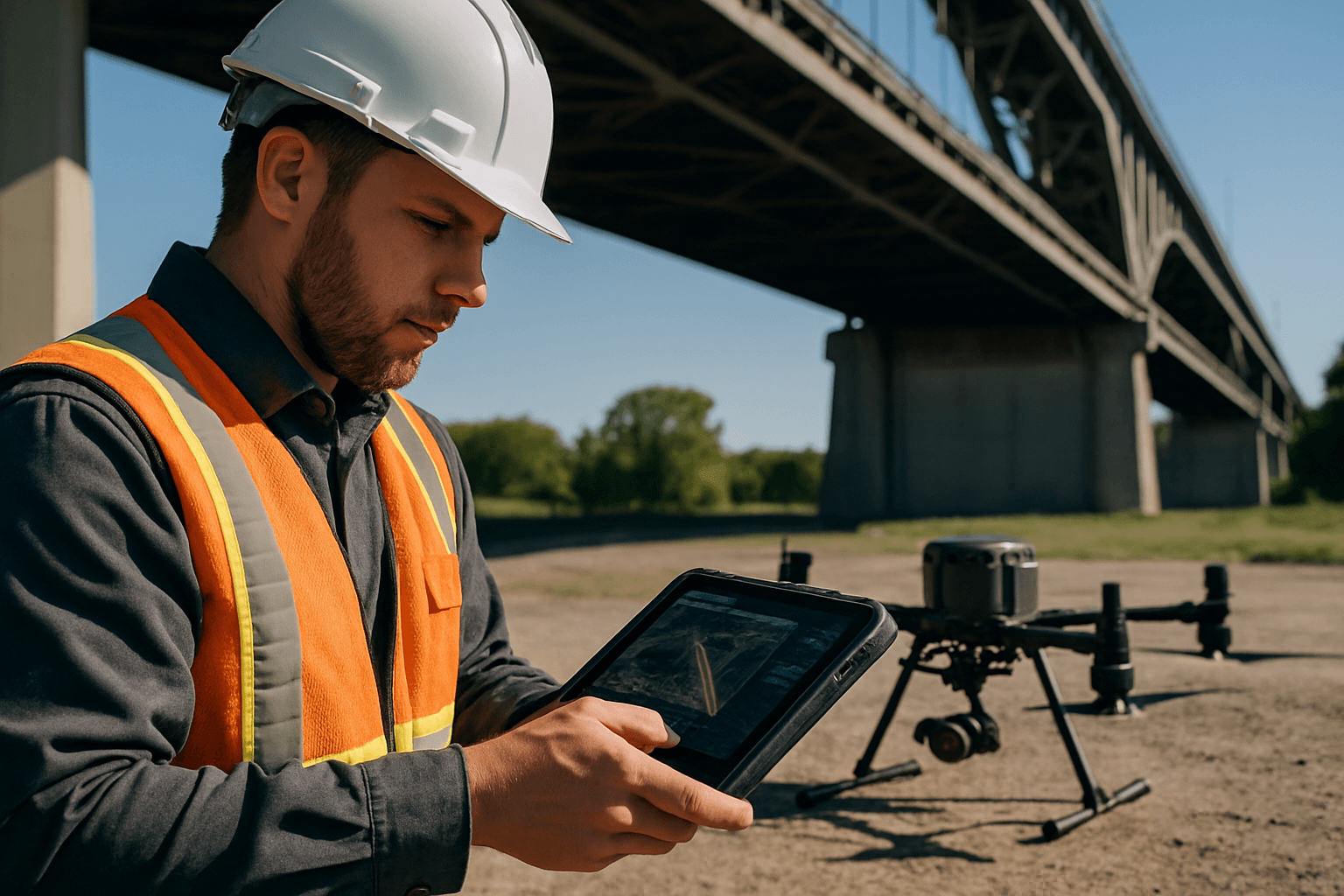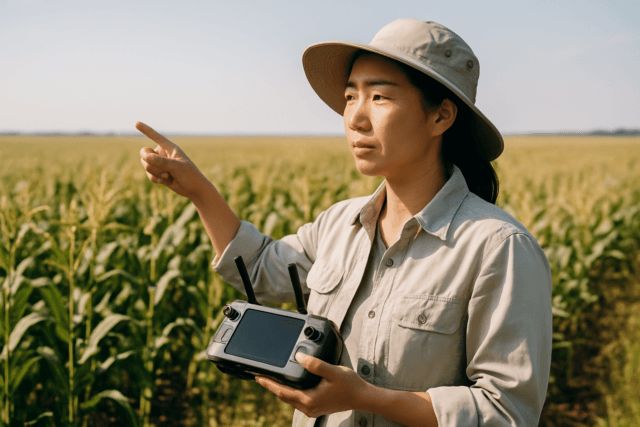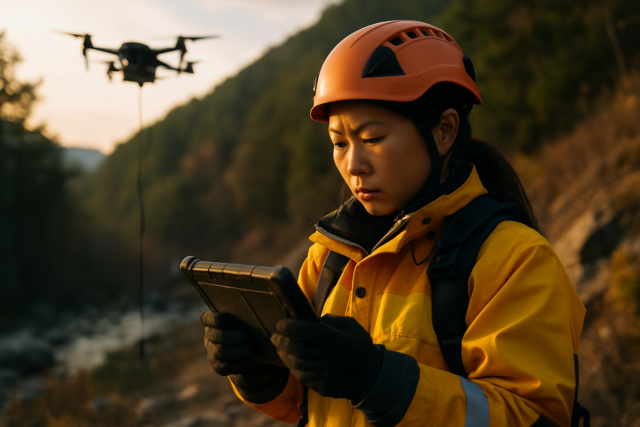Drones have emerged as powerful tools across various industries, offering significant cost savings and operational efficiencies. From construction and agriculture to energy and infrastructure, the adoption of drone technology is transforming traditional practices, reducing expenses, and improving overall outcomes. This article explores the diverse ways in which drones contribute to cost savings, highlighting real-world examples and potential benefits across different sectors.
Construction Industry: Building a Better Bottom Line with Drones
The construction industry, known for its high capital expenditure and complex project management, has found drones to be invaluable in optimizing operations and cutting costs. Drones offer high-quality video and photo capabilities that provide essential information for project managers, leading to significant savings in various aspects of construction projects.
Enhancing Worker Safety
Safety is paramount in construction, and drones play a crucial role in protecting workers. Construction sites are inherently risky, with the Department of Labor reporting 1,102 work-related fatalities in the industry in 2019. Drones can perform potentially dangerous tasks, such as surveying roofs or high areas of buildings, providing high-quality images and data without exposing workers to risk. Supervisors and safety managers can use drones to monitor sites, identify potential hazards, and prevent accidents, reducing both human and financial costs associated with injuries.
Streamlining Land Surveying and Mapping
Traditional land surveying methods are time-consuming and labor-intensive. Drones equipped with advanced cameras and sensors can quickly capture high-resolution images and data, creating detailed 3D maps and models of construction sites. This process, which used to take weeks, can now be completed in hours, saving time and money.
Key Benefits of Drone Surveys
- Increased Accuracy: Drones capture millions of data points, creating super-detailed site maps.
- Enhanced Safety: Eliminates the need for surveyors to enter dangerous areas.
- Cost-Effectiveness: Reduces labor costs and the need for expensive equipment.
- Repeatability: Regular surveys can be easily conducted to track progress.
Improving Project Planning and Resource Management
Drones provide project managers and designers with accurate measurements and shareable maps, aiding in project planning and inventory management. High-resolution maps and 3D models enable informed decision-making, reducing costly errors and delays.
Efficient Equipment and Materials Management
Managing equipment and materials on construction sites is a complex task. Drones can revolutionize resource management by:
- Conducting quick inventory counts of material stockpiles.
- Tracking equipment with regular flyovers.
- Verifying deliveries.
- Deterring theft through aerial surveillance.
- Optimizing site layout with bird’s-eye views for maximum efficiency.
Accurate Estimates and Marketing
Drones can quickly map land and provide high-quality photos for reference, enabling more accurate estimates. Their cameras capture measurements effectively, reducing human error and ensuring more profitable jobs. Additionally, drones offer high-quality marketing content at a modest cost, providing aerial shots of construction sites and surrounding areas in 4K ultra HD quality.
Real-Time Progress Tracking
Drones facilitate real-time progress tracking by providing regular aerial footage, enabling project managers to monitor work progress, ensure adherence to timelines, identify bottlenecks, and optimize workflows.
Case Studies: Quantifying the ROI
Commercial Office Renovation: A major developer used drones to monitor a 20-story office building renovation, reducing inspection time by over 60% and labor costs by nearly 30%. The drone-generated 3D models enabled early detection of structural issues, preventing costly delays and contributing to a 25% overall improvement in project ROI.
Highway Infrastructure Project: Drones were used for routine progress tracking and safety inspections on a highway construction project. The aerial footage helped detect hazards early, resulting in a 40% reduction in safety incidents. High-resolution maps enabled better logistics planning, reducing material delivery times and shortening the overall project timeline by 15%.
Financial Impact
Drone use in the construction industry has proven efficiencies and economic benefits, with expected savings ranging from $1.8 to $4.3 billion between 2020 and 2040. Construction firms using drones have reported seeing a return on investment (ROI) within one year.
Agriculture: Cultivating Savings with Drone Technology
In agriculture, drones offer a cost-effective alternative to traditional methods for various tasks, leading to improved yields and significant savings. By minimizing the need for expensive machinery and manned aircraft, drones provide farmers with valuable insights and capabilities.
Precision Crop Management
Drones equipped with infrared cameras can quickly survey vast farmland and identify signs of crop stress from drought, pests, or disease. This allows farmers to make early interventions with precision irrigation or pesticides, optimizing resource use and reducing waste.
Cost Savings on Chemical Usage
Precision agriculture technologies like drone spraying can reduce chemical usage by up to 30% while maintaining or improving crop health. By reducing the volume of chemicals needed, farmers can significantly cut costs. Targeted chemical application reduces the risk of over-application and chemical runoff, protecting plants, soil, and surrounding ecosystems.
Water Conservation
Agricultural drones have treated over 500 million hectares globally, yielding cumulative savings of 210 million metric tons of water, equivalent to the annual water consumption of 390 million people.
Reduced Carbon Emissions
Agricultural drone use has reduced chemical usage by 47,000 metric tons and lowered carbon emissions by 25.72 million metric tons, equal to the annual carbon sequestration of 1.2 billion trees.
Savings on Fuel and Labor
Drones require less fuel and maintenance compared to traditional methods, reducing overall operational costs. They can be operated by fewer people, freeing up labor for other tasks on the farm.
Case Studies: Real-World Examples
- Brazilian Coffee Growers: Using DJI Agras T40 and T50 drones to apply pesticides, fungicides, and foliar fertilizers has reduced operational costs for Brazilian coffee growers by 70% compared to manual spraying and 50% compared to tractor spraying.
- Romanian Vineyard Owner: Reduced chemical usage by half, from 241.64 liters to 111.94 liters, and reduced spraying time from 3-4 days to just a few hours using the DJI Agras T50.
Economic Analysis: Drone Spraying ROI
A comprehensive economic analysis suggests that the break-even period for most farms using drone spraying has shortened to between 1-3 years, depending on farm size and crop type. Drones can treat 30-40 acres per hour, compared to 15-20 acres for traditional equipment, allowing for more timely application during critical growth stages.
Initial Investment
While the initial investment in drone technology can range from $1,000 to $5,000, significant long-term savings can be realized. Initial costs for agricultural spraying drones are:
- Entry-level agricultural drones: $5,000-$10,000.
- Mid-range systems with advanced features: $10,000-$25,000.
- High-end commercial systems with autonomous capabilities: $25,000-$50,000.
Energy Sector: Powering Efficiency with Drone Inspections
Drones offer significant cost savings and safety improvements in the energy sector, particularly in the inspection and maintenance of power generation facilities and renewable energy installations.
Solar Panel Inspections
Drones provide a cost-effective and efficient solution for inspecting solar panel systems. By capturing high-resolution imagery and thermal data, drones enable detailed analysis of panel conditions and performance. This technology enhances maintenance practices by quickly identifying potential defects or soiling, optimizing renewable energy output and extending the lifespan of PV panels.
Cost Savings in Solar Installations
UAVs minimize labor expenses by reducing manual site visits and streamlining solar panel inspections, leading to faster project timelines.
Key cost-saving benefits include:
- Lower labor costs due to automated assessments.
- Reduced downtime by detecting maintenance issues early.
- Faster solar permitting and engineering approvals through precise site data.
Wind Turbine Inspections
Drones can monitor the performance and detect damage in wind turbines without shutting them down, reducing downtime and maintaining higher output levels.
Nuclear Plant Inspections
Drones can avoid up to 10% of the annual radiation dose for personnel in nuclear plants. Traditional inspection methods require reducing the plant’s output to 20% to make the inspection feasible for humans, leading to substantial operational inefficiencies. Drones allow for continuous operation at higher output levels while performing thorough inspections, maintaining productivity, and ensuring safety.
Case Studies: Real-World Applications
- Waste-to-Energy Plant: Shortened plant shutdown by 2 days using the Elios 3, saving over $250,000 USD.
- Wind Farm: Saved over $500,00 by using the Elios 3 to internally inspect the blades of 100 wind turbines and reduced overall inspection times by 75%.
- Dominion Energy: Cutting condenser inspections from 8 days to 8 hours using the Elios 3, saving $150,000 in costs.
Financial Benefits
Drone inspections can be performed over 50 times faster than traditional methods for solar farms. Using drones to inspect an offshore wind farm resulted in 70% cost savings compared to traditional rope access inspections.
Infrastructure Inspections: Bridging the Gap with Drones
Drones offer a safe, efficient, and cost-effective solution for inspecting infrastructure such as bridges, pipelines, and transmission lines.
Bridge Inspections
Drones can quickly and safely inspect bridges, providing detailed visual data for engineers to assess structural integrity and identify potential issues. This eliminates the need for costly and time-consuming manual inspections, reducing traffic disruptions and improving safety.
Pipeline Inspections
Drones equipped with thermal cameras can detect leaks and other anomalies in pipelines, helping to prevent environmental damage and reduce product loss. Regular drone inspections can identify potential problems early, allowing for timely repairs and preventing costly failures.
Transmission Line Inspections
Drones can inspect power lines and transmission towers, identifying damaged or deteriorated components. This helps to prevent power outages and ensures the reliable delivery of electricity. Drones can also be used to assess vegetation encroachment, helping to maintain clearances and prevent fires.
Case Studies: Real-World Examples
- Offshore Wind Farm: A study found that using drones to inspect an offshore wind farm resulted in 70% cost savings compared to traditional rope access inspections, with a 90% decrease in downtime losses.
Financial Impact
Georgia Power’s drone program achieved a 60% reduction in costs while uncovering up to four times more issues than traditional methods.
Oil and Gas Industry: Drilling Down on Savings
Drones in the oil and gas industry help reduce inspection time, cut costs, decrease downtime, and identify problems early on. They can access pipe racks, chimneys, tanks, flares, and distillation columns, taking up to 30 measurements every 10 minutes.
Cost Savings
By avoiding unnecessary scaffolding, rope access, or man lifts, which can be expensive and dangerous, drones substantially reduce costs and time for oil and gas inspections. One company cut inspection time by up to 90% and saved $30,000 on tank inspections by avoiding scaffolding and rope access.
Safety
Drones collect high-quality visuals and UT measurements without having to enter an asset, avoiding any work at height.
Conclusion: Embracing the Drone Revolution
Drones are revolutionizing industries by offering significant cost savings, improved safety, and increased efficiency. From construction and agriculture to energy and infrastructure, the applications of drone technology are vast and varied. By embracing this technology, businesses can optimize their operations, reduce expenses, and gain a competitive edge in today’s rapidly evolving marketplace. As drone technology continues to advance, the potential for further cost savings and innovation is virtually limitless.





